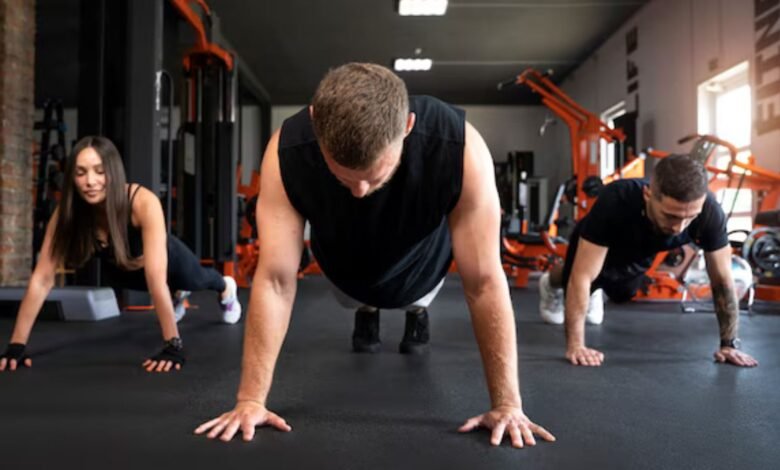Erging: The Ultimate Guide to Indoor Rowing

Indoor rowing, commonly referred to as erging, has gained immense popularity as a full-body workout. Whether you’re a seasoned athlete or just starting your fitness journey, understanding erging can enhance your training and overall health. This article delves into what erging is, its benefits, techniques, and tips for incorporating it into your fitness routine.
What is Erging?
Definition of Erging
Erging is a term derived from the use of an indoor rowing machine, also known as an ergometer or “erg.” It simulates the rowing motion found in water, providing a low-impact, high-intensity workout that engages multiple muscle groups.
The History of Indoor Rowing
Indoor rowing machines were developed in the 1960s to help rowers train off the water. Over the years, they have evolved into sophisticated machines used in gyms, homes, and rowing clubs worldwide. With advancements in technology, modern ergometers now feature digital displays, customizable settings, and connectivity options.
Benefits of Erging
Full-Body Workout
One of the most significant advantages of erging is its ability to engage almost all major muscle groups. This includes:
- Legs: The drive phase primarily targets quadriceps, hamstrings, and calves.
- Core: A strong core is crucial for maintaining proper form and balance during the stroke.
- Arms and Back: The pull phase activates the shoulders, arms, and upper back muscles.
Cardiovascular Health
Erging is an excellent cardiovascular workout that increases heart rate and enhances lung capacity. Regularly incorporating erging into your fitness routine can improve overall heart health and endurance.
Low-Impact Exercise
Unlike many high-impact workouts, erging is gentle on the joints. This makes it an ideal choice for individuals recovering from injuries or those seeking a lower-impact alternative to running or cycling.
Weight Management
Erging burns a significant number of calories, making it an effective tool for weight management. Depending on the intensity and duration, a 155-pound person can burn approximately 400-600 calories per hour of moderate to vigorous rowing.
Mental Health Benefits
Engaging in physical activity, including erging, releases endorphins, which can improve mood and reduce stress. Additionally, the rhythmic nature of rowing can be meditative, promoting mental clarity and focus.
Techniques for Effective Erging
Proper Form and Technique
Maintaining proper form is crucial for maximizing benefits and preventing injuries while erging. Here’s a step-by-step breakdown of the rowing stroke:
- The Catch: Start with your knees bent and your shins vertical. Grip the handle and lean slightly forward from your hips.
- The Drive: Push through your heels, extending your legs. Once your legs are straight, lean back slightly while pulling the handle towards your chest.
- The Finish: At the end of the stroke, your legs should be straight, and the handle should be at your chest, with your elbows drawn back.
- The Recovery: Extend your arms first, then lean forward from your hips while bending your knees to return to the catch position.
Setting Up Your Erg
Before starting, ensure that your rowing machine is set up correctly. Adjust the foot straps to secure your feet, and set the damper level according to your fitness level. A damper setting between 3-5 is generally suitable for most users.
Rowing Workouts
To make the most of your erging sessions, consider incorporating various workouts:
- Steady-State Rowing: Row at a consistent pace for a set duration (e.g., 20-30 minutes) to build endurance.
- Interval Training: Alternate between high-intensity bursts and recovery periods to enhance cardiovascular fitness and burn calories.
- Power Rows: Focus on shorter, intense sessions (e.g., 1-2 minutes) at maximum effort to improve strength and power.
Tips for Successful Erging
Start Slow
If you’re new to erging, begin with shorter sessions (10-15 minutes) and gradually increase the duration and intensity as your fitness improves.
Monitor Your Progress
Use the machine’s display to track your time, distance, split times, and calories burned. Monitoring your progress can help you set goals and stay motivated.
Stay Hydrated
Always have water on hand and take breaks as needed to stay hydrated during your workouts.
Listen to Your Body
Pay attention to how your body feels during and after each session. If you experience pain or discomfort, adjust your form or take a break to prevent injuries.
Conclusion
Erging is a fantastic way to improve your fitness while enjoying a full-body workout that is low-impact and effective. By mastering proper techniques and incorporating various workouts, you can reap the many benefits of indoor rowing. Whether you’re training for a competition or simply looking to stay fit, erging can be a valuable addition to your routine.
ALSO READ:Understanding the Mollar CGT20750 Drawing: A Comprehensive Guide
FAQs
1. How often should I erg?
It depends on your fitness goals, but incorporating erging into your routine 2-4 times a week can provide significant benefits.
2. What should I wear while erging?
Wear comfortable, breathable clothing and supportive footwear. Avoid loose clothing that may get caught in the machine.
3. Can beginners use an erg?
Absolutely! Beginners can start at a low intensity and gradually increase their duration and effort as they become more comfortable.
4. Is erging suitable for weight loss?
Yes, erging can be an effective tool for weight loss due to its high calorie-burning potential, especially when combined with a balanced diet.
5. How do I avoid injuries while erging?
Focus on maintaining proper form, start slow, and listen to your body. If you experience pain, stop and reassess your technique.



